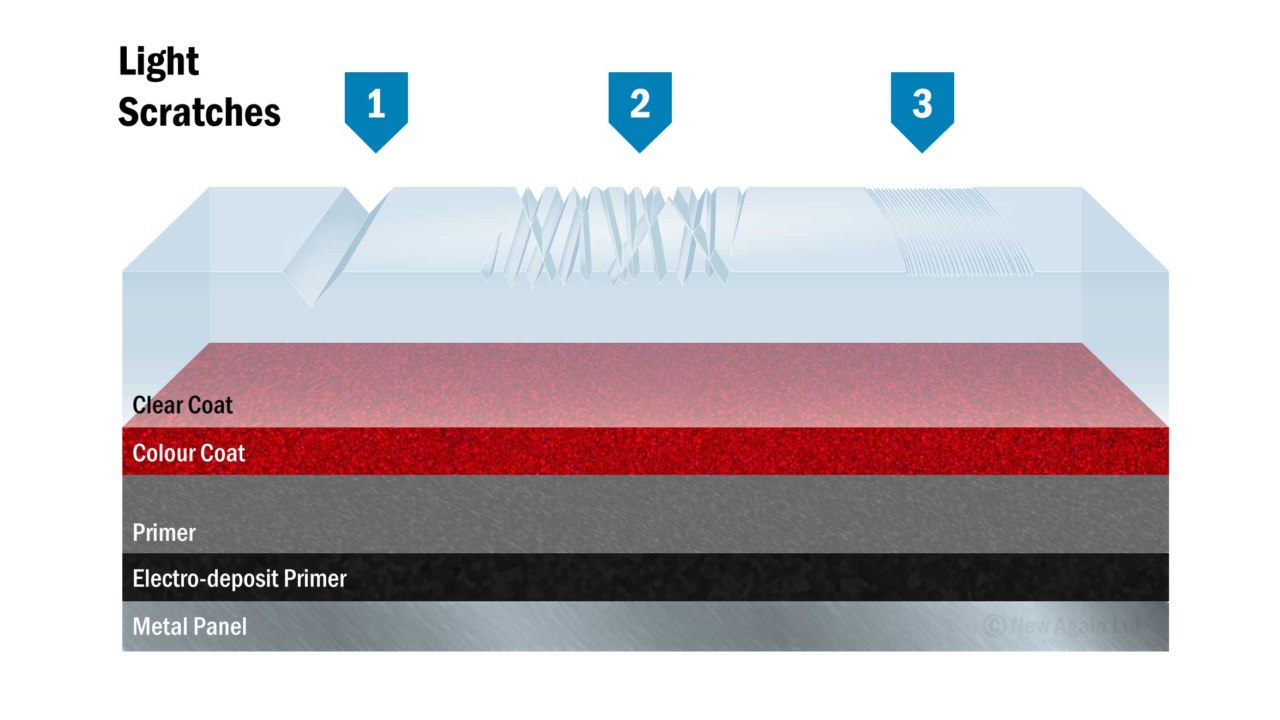How thick is car paint?
Quick answer: Most factory paint is about 80–140 microns (0.08–0.14 mm) in total for primer, basecoat and clear. The clear coat alone is typically ~30–50 µm. Edges and sharp body lines are thinner; repainted panels are usually thicker (often 180–300+ µm).
On a modern car, the total paint system, primer, colour coat and clear coat, is usually in the range of 100–180 microns thick (that’s about the thickness of a human hair) with the average around 120 microns.
-
Primer: ~20–40 microns
-
Base coat (colour): ~10–30 microns
-
Clear coat: ~30–50 microns
It varies by manufacturer, model, and even by panel. For example, bonnets and roofs can sometimes be a little thinner, while bumpers (which are plastic) are often painted more lightly. Luxury or high-end cars might have slightly thicker paint, while some budget models can be at the lower end of the scale.
Some detailers measure paint with an electronic paint-depth gauge. This tells them how much “room” there is to work with. Since machine polishing removes a very small amount of clear coat (a few microns), knowing the total thickness can be essential to keep everything safe. However, the amount of paint removed is just a few microns and measuring the paint is only really necessary when doing paintwork correction to deeper scratches.

Back in the days before clear coat systems, cars were painted in what’s called single-stage paint which consisted of colour and gloss all in one layer over a primer. The overall build wasn’t miles off what we see today, usually somewhere around 80–140 microns in total. That’s about the thickness of a human hair, give or take.
The primer would typically be 20–40 microns, with the colour coat 40–100 microns on top. But consistency wasn’t really the name of the game back then. Coachbuilt cars and hand-sprayed finishes often got more coats, then were flatted back and polished. Some panels ended up thin, others much thicker. On high-end cars, or where a painter laid it on heavy, you might see readings of 150–300 microns or more.
By the ’70s and ’80s, solid colours were still mostly single-stage, while metallics and pearls started to push manufacturers toward clear coat systems.
The takeaway? Old paint can be all over the place. If you’re checking a classic with a paint depth gauge, don’t be surprised if the numbers jump panel to panel. And if you’re seeing really high readings, chances are it’s had a repaint somewhere along the line.
However, most of the classic cars we see these days have been repainted, which means by hand, and they usually have a nice thick coat of hard-wearing 2-pack paint on them.
Written by Danny Argent. Last updated 22/09/2025 17:50
